

Unclaimed: Are are working at InVision ?
InVision Reviews & Product Details
InVision is a collaboration and prototyping software designers use to create interactive design prototypes. The platform allows users to share their work easily, thus allowing for easier design collaboration. It also offers presentation tools and provides a platform by which people can easily provide feedback.
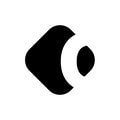
( 1 )
| Capabilities |
|
|---|---|
| Segment |
|
| Deployment | Cloud / SaaS / Web-Based, Mobile Android, Mobile iPad, Mobile iPhone |
| Training | Documentation |
| Languages | English |

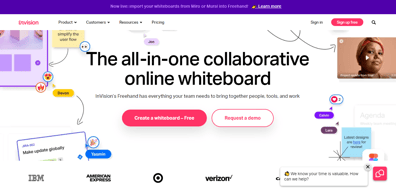
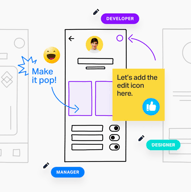
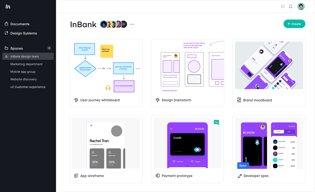
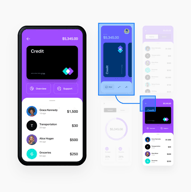
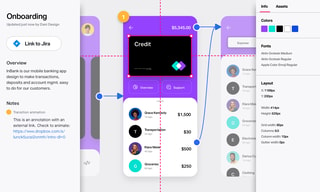

They keep coming out with new features and new ways to make the prototype feel more real.
The only thing is that sometimes there are issues when updating files through sketch, but not sure if that's invision or sketch issue
We are doing usability testing with clients before we get to the development stage and finding issues before its too late. We also use it internally for mood boards
It’s simple and easy to use. You can create a prototype that looks and functions like the real deal.
Has a bit of a learning curve. I’m not the best designer, so more presets would’ve been nice.
Creating a prototype to get to an MVP
I love that the interface matches Adobe products like Photoshop and Illustrator so it's easy to quickly build designs using elements and layers.
I find it difficult to quickly share my project with clients and teammates through a public URL link.
InVision makes it so easy to design interactive web pages in a much more dynamic way than Photoshop or Illustrator. They provide easy to use tools that reduce design time almost in half!
Invision is one of the best software for sharing and making prototypes, it is so easy to use and understand for any novice, the prototypes are also interactive which is more exciting for the clients to see. They also have feature for user testing and collecting information after the design is all ready this is specially very good as you do not need to use another software again for testing. Invision also has an option to make mood boards which is also helpful for showing to clients all in one place and it also supports GIFs. Invision has also come up with InVision studio which is such a wonderful product on its own. There is soo much scope with invision studio, it is better than all the other designing software as one can also animate and prototype within. The best part is that it is FREE, who does not love FREE products.
There is nothing much that i dislike in Invision as i regularly use it and love it. I think maybe a few things which can be added as another product is maybe project management although they already have task management but project management will help alot. I think they should start prototypes for AR/VR and MR too as these are the new medias. This will help them to capture the future market too.
Invision helps me to design better products with immediate feedback from clients through the comments sections and also user testing with their additional feature of user testing.
I love InVision for the purpose of presenting designs to a client. It allows for collaboration with the client where they can comment right on the designs so there is no guessing what items they want changed.
There’s a limit to the file size and that can get a bit tricky when you want to show animations which can only be uploaded as animated GIFs.
Never again get client changes or amends to a design via email where things constantly get lost in translation. Do more efficient edits and get it right the first time with InVision.
InVision is multifunctional, it allows me to do more things than I can mention, I can design, build a prototype, share everything I want, try designs and develop all the business potential with the designs of our presentation to the world. I can achieve my job of finding new ways and ways to achieve a perfectly representative image of our product and InVision has everything to be able to achieve it.
The software can be generally a bit complex to use, the interface has cost me a bit to understand it completely. I need to integrate other applications to work properly, and in doing everything becomes extremely slow and heavy, I would like that problem to be solved because the use of InVision is really important for the work I do.
InVision has allowed us to achieve a fresh and new image of what we really offer in the market. It is an effective tool that has given me the possibility of obtaining, through various designs and thanks to which I can share them, a much greater scope and thus reach many potential and active clients. In an authentic way, it has enabled us to creatively create, administer and design our image to the world.
I love that it can easily be synced through Sketch! Craft Manager is great. Another plus is that they now have another tool that is just like Sketch, called Studio. It's all in one! I also love that you can edit headers and footers, it makes it feel like you can scroll on a real life phone and have what you need stay in place. It's also great that if you select iPhone, then the designs show up right on an actual iPhone! Other great features are the ability to have a timer on, so then pop ups can dissolve in and out.
I don't like how Craft/InVision doesn't always update correctly. Another problem is that there might be some animation flaws when you click through the flow.
With InVision, I am able to solve the disconnect between product managers, developers, and designers. Both product managers and developers need to see how to the user experience works, so with this, designers are able to showcase the work. For all the projects I have worked on, I use InVision to show to others.
So easy to use, learning curve is very low and so powerful.
Uploading assets is a little tedious and can cause confusion at times
I use it to do quick prototyping with to understand the flow of the app.
Lo mejor de InVision es que permite una interacción muy fluida de los integrantes de las diferentes áreas (desarrollo, diseño, calidad, gerencia) que están involucrados en el proyecto. Los puntos fuertes que considero que posee son, el manejo de prototipos, la simulación de la navegación requerida, la interacción por comentarios y el historial de cambios. Por otro lado es una aplicación de usabilidad muy intuitiva para cualquier perfil (técnico o no) que requiera interactuar con ella. En general una gestión integral del proyecto que la hace una herramienta excepcional en indispensable para cualquier empresa que desarrolle software.
Hemos tenido ciertos problemas con la sincronización cuando hay varias personas haciendo cambios. En especifico cambios que no se han subido y que ocasiona que se continúe trabajando en diseños viejos.
Mantener un solo diseño del proyecto o prototipo de software, con visibilidad controlada para todas las personas involucradas. El beneficio es tener el proceso complejo del diseño bien encauzado manteniendo la visibilidad durante su desarrollo, con lo cual se consigue una gestión eficiente de esta parte de los proyectos.
I like the simplicity of the product. I like being able to import all of my designs and screens from Sketch into InVision and being able to create hotspots. Adding notes/ comments to screens I want to improve is also easy and allows me to remember to improve something. Also, the invision testing screen is really nice and is pleasing to look at when doing a demo of the product.
I dislike not being returned to my spot in the project area after clicking "back" to exit from full screen. I always get put to the top and this often becomes difficult if I have hundreds of screens to go through. I also don't really like the limited functionality of the product when it comes to the prototypes. I am only able to click, whereas some products I can enter things into textboxes.
I'm doing high fidelity mockups to show to potential clients and stakeholders and showing the future of the product. This allows me to avoid the stress of having a product ready in a short span of time when I can instead throw together a mockup.